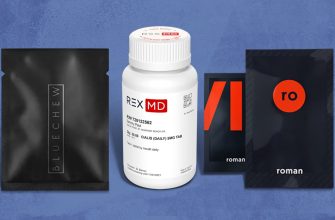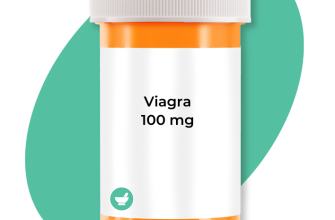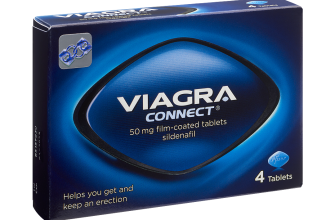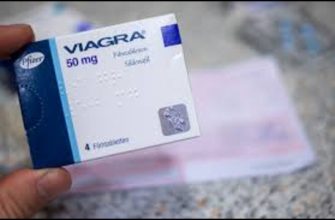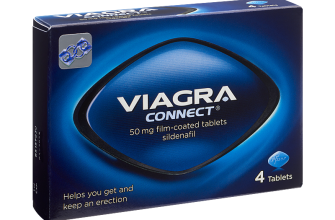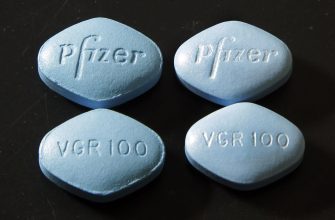No, there isn’t currently an FDA-approved “female Viagra.” However, there’s a medication, Addyi (flibanserin), approved to treat hypoactive sexual desire disorder (HSDD) in premenopausal women. Understanding the distinction is key.
Addyi works differently than Viagra, targeting brain chemistry rather than blood flow. Its effects are subtle, potentially improving sexual desire over time, not providing immediate results like Viagra. Consult your doctor to determine if Addyi might be suitable for you, considering your individual health history and potential side effects.
Important Note: Self-treating HSDD is risky. A thorough medical evaluation helps identify underlying health problems contributing to low libido. Your doctor can discuss various treatment options, including Addyi, lifestyle changes, or other therapies, providing personalized recommendations based on your specific needs.
Remember: Open communication with your doctor is crucial for effective treatment. They can help you understand the nuances of available medications and explore alternative approaches to improve your sexual health.
- Female Viagra FDA Approved: A Comprehensive Overview
- What is Female Viagra and How Does it Work?
- How Flibanserin Differs from Viagra
- Understanding Flibanserin’s Mechanism
- Important Considerations
- Alternative Approaches
- FDA Approval Status: The Current Situation
- Alternative Treatments
- Seeking Professional Guidance
- Ongoing Research
- Conditions Treated by FDA-Approved Medications for Female Sexual Dysfunction
- Common Side Effects and Potential Risks
- Comparison to Other Treatments for Female Sexual Dysfunction
- Finding a Qualified Healthcare Provider for Consultation
- Verify Credentials and Experience
- Understanding Your Options
- Gathering Further Information
- Cost and Insurance Coverage Options
- Negotiating Price and Utilizing Discounts
- Insurance Coverage
- Manufacturer Savings Programs
- Alternatives and Considerations
- Financial Assistance Resources
Female Viagra FDA Approved: A Comprehensive Overview
No drug is currently FDA-approved as “female Viagra.” However, several medications address specific aspects of female sexual dysfunction.
The FDA has approved Addyi (flibanserin) to treat hypoactive sexual desire disorder (HSDD) in premenopausal women. It’s important to understand Addyi works differently than drugs used to treat erectile dysfunction in men. Addyi impacts brain chemistry, affecting libido.
- Addyi’s Mechanism: It increases serotonin and norepinephrine levels, influencing sexual desire.
- Important Note: Addyi can cause low blood pressure and dizziness, requiring careful monitoring and potential interactions with other medications. Alcohol use is strictly prohibited while taking Addyi.
- Prescription Only: A doctor must assess your medical history and conduct a thorough evaluation before prescribing Addyi.
Other options exist for treating various female sexual health concerns. These may include medications for managing hormonal imbalances or addressing underlying medical conditions contributing to sexual dysfunction.
- Hormone Therapy: For women experiencing sexual dysfunction related to menopause or hormonal changes, hormone replacement therapy (HRT) can sometimes help.
- Counseling: Addressing psychological factors influencing sexual desire and function is crucial. Sex therapy or couples counseling can be highly beneficial.
- Lifestyle Changes: Improving overall health, managing stress levels, and engaging in regular exercise contribute to better sexual well-being.
Always consult a healthcare professional. They can provide accurate information, personalized recommendations, and address any concerns you have regarding female sexual health. They can help you determine the best course of action based on your specific situation.
What is Female Viagra and How Does it Work?
There is currently no FDA-approved drug specifically called “Female Viagra.” However, Flibanserin (Addyi) is the only drug approved by the FDA to treat hypoactive (low) sexual desire disorder (HSDD) in premenopausal women. It’s important to understand that it doesn’t work like Viagra for men.
How Flibanserin Differs from Viagra
Viagra increases blood flow to the penis. Flibanserin, conversely, affects brain chemistry, specifically neurotransmitters like serotonin, dopamine, and norepinephrine. It aims to rebalance these chemicals, potentially increasing libido.
Understanding Flibanserin’s Mechanism
Flibanserin’s precise mechanism isn’t fully understood, but it’s believed to increase dopamine and norepinephrine levels while decreasing serotonin levels in specific brain regions. This shift in neurotransmitter balance may help improve sexual desire. It’s a daily medication, unlike Viagra, which is taken as needed.
Important Considerations
Side effects can include dizziness, nausea, and sleepiness. Drug interactions are possible, so discuss all current medications with your doctor before starting Flibanserin. Consult your physician to determine if Flibanserin is appropriate for you, as it’s not suitable for all women.
Alternative Approaches
Lifestyle changes, such as stress reduction and improved communication with your partner, can significantly impact sexual desire. Therapy may also be beneficial for addressing underlying psychological factors contributing to HSDD.
FDA Approval Status: The Current Situation
Currently, there are no FDA-approved medications specifically marketed as “female Viagra.” The FDA has not approved any drug for the treatment of hypoactive sexual desire disorder (HSDD) in premenopausal women.
Alternative Treatments
Several medications treat other aspects of female sexual dysfunction, but these aren’t directly analogous to sildenafil (Viagra) used for erectile dysfunction in men. These options may include therapies addressing hormonal imbalances or other underlying medical conditions contributing to sexual problems. Your doctor can discuss appropriate treatment plans based on your specific situation.
Seeking Professional Guidance
It’s crucial to consult a healthcare professional before starting any treatment for sexual dysfunction. They can accurately diagnose the underlying causes and recommend appropriate and safe options. Self-treating can be dangerous. Never rely on unverified information found online. Always seek advice from a qualified medical expert for accurate diagnosis and treatment guidance.
Ongoing Research
Research into female sexual dysfunction continues. New treatments may emerge in the future. However, for now, rely on your doctor’s guidance concerning available and approved therapies.
Conditions Treated by FDA-Approved Medications for Female Sexual Dysfunction
Currently, the only FDA-approved medication specifically for female sexual dysfunction addresses Hypoactive Sexual Desire Disorder (HSDD). This means that medications can help women experiencing persistently low sexual desire that causes personal distress.
Flibanserin, the sole FDA-approved medication for HSDD, targets neurotransmitters in the brain thought to influence sexual desire. It’s important to note that flibanserin doesn’t treat other forms of female sexual dysfunction, such as arousal or orgasmic disorders.
Women considering flibanserin should discuss potential side effects with their healthcare provider. These can include dizziness, nausea, and fatigue. The medication is not suitable for everyone, particularly those taking certain other medications.
It’s crucial to remember that female sexual dysfunction has multiple potential underlying causes. A proper diagnosis from a healthcare professional is necessary to determine the appropriate treatment approach. This may involve addressing psychological factors, relationship issues, or underlying medical conditions, in addition to, or instead of, medication.
Always consult with your doctor before starting any new medication, including those for sexual dysfunction. They can assess your individual needs and determine the most suitable course of action.
Common Side Effects and Potential Risks
While FDA-approved female sexual dysfunction treatments offer benefits, understanding potential side effects is key. These vary depending on the specific medication and individual response.
- Headache: This is a frequently reported side effect. It’s usually mild and resolves on its own. Consider over-the-counter pain relievers if needed. Consult your doctor if headaches are severe or persistent.
- Nausea: Some women experience nausea, often mild. Eating smaller, more frequent meals might help. If nausea is bothersome, discuss it with your doctor.
- Flushing: A feeling of warmth or redness in the face, neck, and chest may occur. This is usually temporary and resolves without intervention.
- Dizziness: This side effect is less common, but should be reported to your doctor immediately. Avoid activities requiring alertness until you know how the medication affects you.
More serious, though rare, side effects include changes in blood pressure or vision. Immediate medical attention is required if you experience:
- Sudden chest pain
- Sudden vision changes
- Severe dizziness or lightheadedness
- Severe or persistent headache
Before starting any medication, discuss your medical history, including any pre-existing conditions, allergies, and other medications you are taking. This ensures your doctor can assess potential risks and benefits accurately and safely.
- Always follow your doctor’s instructions regarding dosage and frequency.
- Report any side effects, no matter how minor they seem.
- Never exceed the prescribed dose.
- Store the medication properly, following the directions on the label.
Open communication with your doctor is crucial for managing potential side effects and maximizing the positive effects of your medication.
Comparison to Other Treatments for Female Sexual Dysfunction
While several treatments address female sexual dysfunction, each offers unique benefits and drawbacks. Let’s examine some key differences.
Hormone Replacement Therapy (HRT): HRT may help women experiencing sexual dysfunction related to menopause by restoring hormone balance. However, HRT carries potential risks, and its suitability depends on individual health factors. Consult your doctor to assess your candidacy.
Lifestyle Modifications: Addressing underlying health conditions like diabetes or cardiovascular disease, coupled with regular exercise and a balanced diet, can significantly improve sexual function. This approach provides long-term benefits but requires commitment and may not be sufficient alone.
Counseling and Therapy: Addressing psychological factors contributing to sexual dysfunction, like anxiety or relationship issues, through therapy, often proves beneficial. This may involve individual, couples, or sex therapy, providing personalized support for emotional and relational aspects impacting sexual health.
Other Medications: Several medications, often prescribed off-label for female sexual dysfunction, exist, but their efficacy and side effects vary considerably. Discuss options with your doctor to determine the best fit for your individual situation, considering potential interactions with other medications you may be taking.
Note: This information provides a general overview. Always consult a healthcare professional for personalized advice and treatment options tailored to your specific needs and medical history. They can accurately assess your condition and recommend the most appropriate course of action.
Finding a Qualified Healthcare Provider for Consultation
Begin your search by checking your insurance provider’s directory. This is a quick way to locate in-network doctors specializing in women’s health.
Next, explore online physician directories like Healthgrades or Vitals. These platforms allow you to filter by specialty (e.g., gynecology, endocrinology), location, and patient reviews. Pay close attention to patient comments regarding communication and bedside manner – these aspects significantly impact the consultation experience.
Verify Credentials and Experience
Always confirm a physician’s board certification through the American Board of Medical Specialties (ABMS) website. Look for extensive experience in hormone replacement therapy or sexual health, as this indicates greater familiarity with the complexities of female sexual dysfunction.
Understanding Your Options
Don’t hesitate to contact several offices directly. Inquire about their experience with prescription medications for female sexual dysfunction, their approach to patient care, and the availability of follow-up appointments. Scheduling a brief phone consultation can answer many initial questions.
| Factor | Recommendation |
|---|---|
| Insurance Coverage | Confirm coverage for consultation and any potential medication. |
| Appointment Availability | Assess wait times for initial consultations and follow-up appointments. |
| Location and Accessibility | Choose a location convenient to your home or work. |
Gathering Further Information
Check the doctor’s website for their professional affiliations and any publications or research related to women’s sexual health. This demonstrates a commitment to ongoing learning and staying current in the field.
Cost and Insurance Coverage Options
The cost of flibanserin, the FDA-approved medication for hypoactive sexual desire disorder in premenopausal women, varies. Expect to pay between $300 and $500 per month without insurance. This price depends on the pharmacy and potential discounts.
Negotiating Price and Utilizing Discounts
Several strategies can lower your out-of-pocket expenses. Many pharmacies offer prescription savings cards. These cards may provide discounts even if you have insurance. Check with your pharmacist or online coupon websites for current offers. Always compare prices across different pharmacies; prices can differ significantly.
Insurance Coverage
Insurance coverage for flibanserin is inconsistent. Whether your plan covers it depends on your specific policy and formulary. Contact your insurance provider directly to check coverage. Pre-authorization may be required before the medication is dispensed. Explore your plan’s formulary to see if flibanserin is listed and what tier it’s in, influencing your copay.
Manufacturer Savings Programs
The manufacturer sometimes offers patient assistance programs. These programs might reduce your cost based on your income level. Check the manufacturer’s website for details and eligibility criteria. These programs could significantly decrease or eliminate your cost.
Alternatives and Considerations
If flibanserin’s cost remains prohibitive, discuss alternative treatment options with your doctor. Lifestyle changes and other therapies might be explored. Remember to consider all aspects before making a decision.
Financial Assistance Resources
Several organizations offer financial assistance for medications. Research patient advocacy groups or look for programs through your local health department. These resources can provide additional support for managing medication costs.


